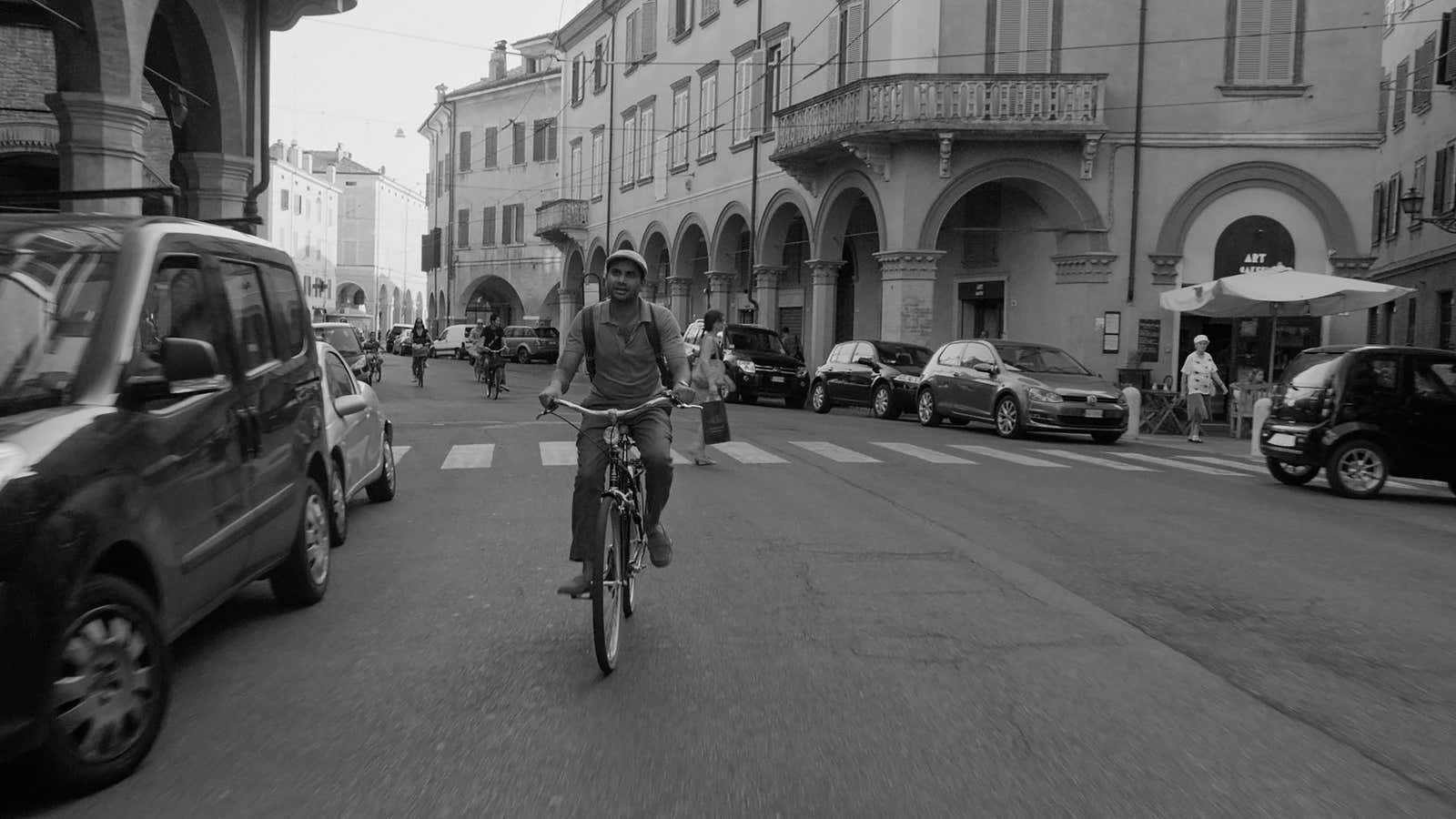Shown entirely in black-and-white, and mostly in Italian, the first episode of the new season of Netflix’s Master of None finds the main character Dev strolling through the streets of Modena in northern Italy, nearly as comfortable as a local. Dev, played by Aziz Ansari, meets a woman there. But his phone—along with her number—is stolen immediately after their encounter. He spends the rest of the episode attempting to recover the device, and musing over what could have been between them.
It’s as overt an homage to Vittorio De Sica’s mournful 1948 Italian classic, Bicycle Thieves, as you’ll find in an American sitcom. Only the stakes were much higher in De Sica’s film, about a poor man who needs to recover his stolen bike to support his family, than in Master of None’s hopeful romance.
“Obviously, there’s an homage to a very specific film in the first episode,” co-creator Alan Yang told the Hollywood Reporter. “But we watched a lot of not only De Sica, but [Michelangelo] Antonioni, [Federico] Fellini.” Other episodes nod to works like Antonioni’s L’Eclisse and L’Avventura.
It’s a habit creators Ansari and Yang picked up during the show’s critically acclaimed first season. It was set in New York and influenced by the comedies of American filmmakers like Woody Allen, Elaine May, and Hal Ashby, which were both funny and cinematically striking.
“At a certain point, people stopped caring about how good comedies looked [on the big screen],” Ansari once told Deadline. “We learned we could do long walks and talks, and during editing, it was fun.” He said James Ponsoldt, who directed the pilot episode, helped the pair figure out the show’s visual voice last season.
The second time around, Netflix’s auteur dramedy wanted to avoid the trap of becoming too formulaic. So the showrunners uprooted Dev from New York to Italy, where the commercial actor is moonlighting as restaurant apprentice. Ansari and Yang both fell in love with Italy during their own travels, and chose to close season one with Dev’s decision to move there. That offered a new story arc for Dev—and a whole new catalog of arthouse films to emulate.
“Our tone, I like to think, is something we’ve kind of established ourselves,” Yang added, “but to be inspired by these other looks and the feel of some of these truly great movies is something that’s just going to make the show more interesting.”
They tried to capture the emotion and lyricism of classic Italian cinema—without taking themselves too seriously. Dev’s sad face becomes something of a running joke during the season. “We put that little dude through the wringer,” said Yang.
Dev returns to New York part way through the season. But even when the show leaves Italy, it retains the Italian influences in sound and feel. Yang says:
There’s a lot to learn from those movies. What do we know about directing that those guys don’t know? Let’s watch these movies and see how they’re made, and pick them apart, and can we attempt to come close to matching the emotional depth or the subtleties or the level of performance, the look of the show.
It might sound pretentious, but man, those movies are good.
